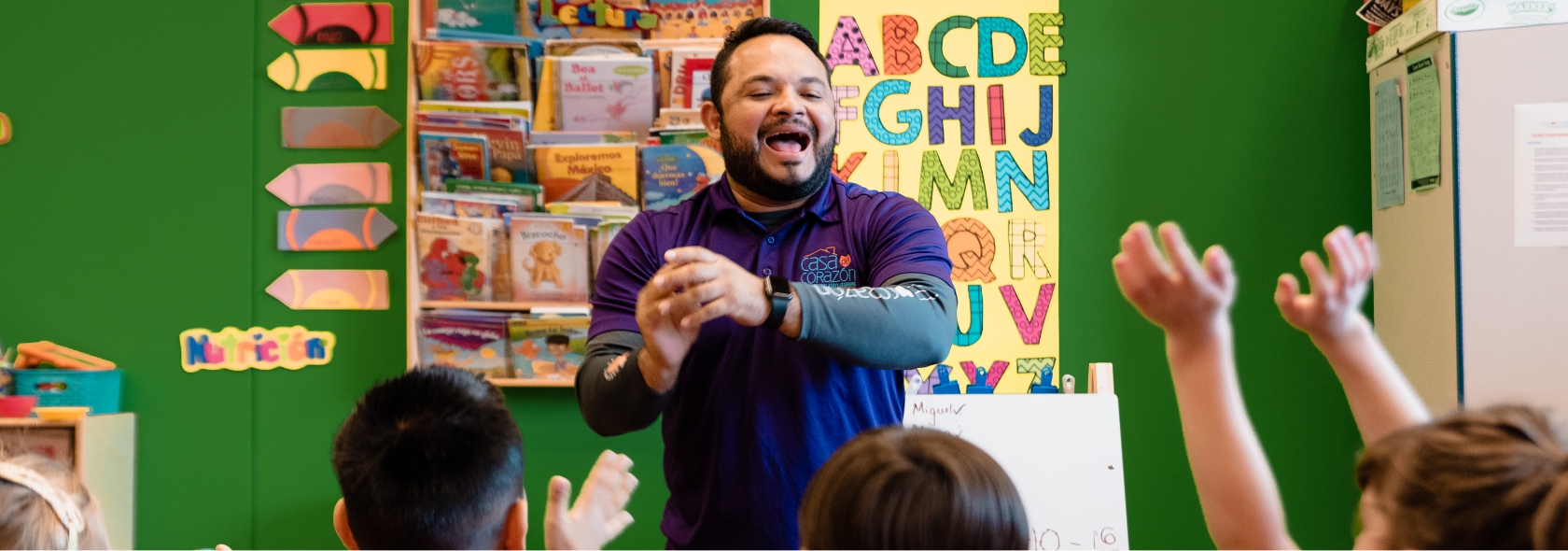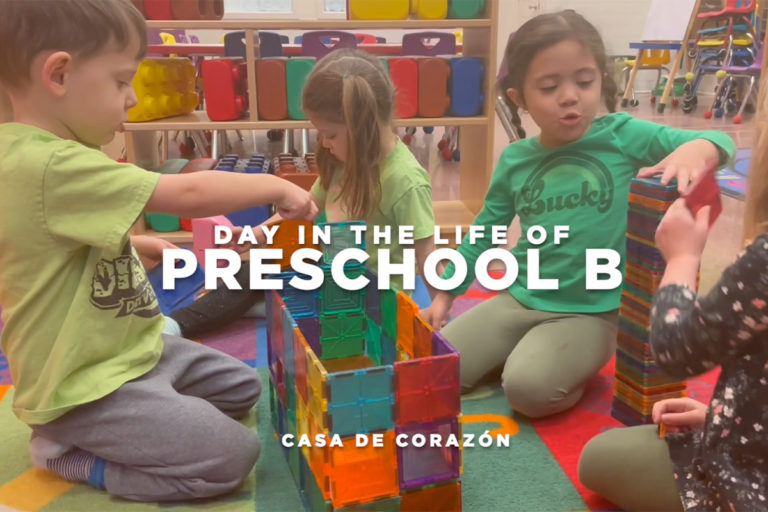What Are the Benefits of Learning Spanish in Childhood?

In early childhood, the brain is naturally primed for language acquisition. Many benefits accompany learning a second language in early childhood. Though second language instruction for young children is common practice in many countries, it is less popular in the United States. However, an increasing number of American parents and educators are starting dual language instruction early, especially in Spanish, to capture the many benefits kids can get from becoming bilingual in the preschool years. Research shows that these positive effects include enhanced memory, problem solving skills, empathy and neurological development.
An estimated 600 million people speak Spanish around the globe, 42 million of those speakers live in the US. Bilingualism, especially with English and Spanish, will continue to be major asset in academia, job markets and cultural life. It also increases cognitive ability and emotional intelligence, especially when bilingualism is achieved in early childhood. At Casa de Corazón we offer a dual language program that ensures kids enter kindergarten speaking Spanish and English.
Why is Early Childhood the Best Time to Learn a Second Language?
According to recent studies, “Research on bilingualism and second language learning converges robustly on a simple take-home point: earlier is better.” When it comes to learning a second language, there is an incremental decline in learning abilities with age. This is due to both biological and environmental factors which make children better than anyone else at gaining and retaining fluency in a second (or third language). Casa de Corazon’s dual language program is designed with this critical window in mind, helping kids become bilingual before starting elementary school.
The good news is that even if children aren’t exposed from infancy, a Spanish immersion preschool, like Casa’s, can ensure that they become fluent before kindergarten. Our dual language program is designed with the critical early childhood window in mind, helping kids become bilingual quickly.
Five Long-Term Benefits of Learning a Spanish at an Early Age
“Bilingualism turns out to be an experience that benefits many aspects of children’s development,” report cognitive development researchers at Cambridge University. CEO Natalie Standridge built Casa de Corazón to support dual language learning in early childhood. She says, “children’s brains are hard-wired to learn language in those first five years of life. And so our program is set up to really foster that language development.” There are five key areas in which bilingualism creates better outcomes are: cognition, attention, memory, academics and emotional intelligence.
1. Enhances Brain Development
A recent Swedish study, found that children who studied a second language’s brains grew in size compared with students studying a different discipline, like math. Another study from Edinburgh’s School of Philosophy, Psychology, and Language Science, found that bilingual young people outperform those who speak only one language on attention and concentration tests. This points toward the possibility that learning a second language in childhood can also positively impact executive functioning skills. Due to recent advancements in neuroscience technology, more and more studies have shown the developmental benefits of second language education in children.
2. Improves Attention and Memory
Dr. Bak’s study shows that memory is impacted by bilingualism. Due to the flexibility of the language centers in the brain, learning a second language increases the capability to switch between attentional tasks, too. Learning a second language at any age, but especially in early childhood, can strengthen the brain’s natural ability to focus and remember.
3. Develops Executive Functioning Skills
Several other studies have shown that multilingual kids have better memories, planning skills and ability to multitask. Bilingual children show superior ability to filter information, problem solve and complete cognitive tasks. Bilingual brain development also leads to greater creativity. Thus, bilingual children are more likely to have problem-solving and innovation skills throughout their lives.
4. Increases Empathy and Emotional Intelligence
“Early childhood is also a time of profound emotional, social, physical, and cognitive development. Language—any language—is a window to the world,” say researchers from Concordia university. Understanding more than one language helps young children appreciate cultures different from their own, making them more adaptable in a globalized world. At Casa de Corazón, global citizenship begins in early childhood, led by a diverse staff of teachers and caretakers from many different Spanish speaking cultures.
5. Boosts Academic Performance
Bilingual children often outperform their monolingual peers in areas such as reading, math, and critical thinking. “Students who learn to read well in, say, Spanish, tend to learn to read well in English over the long term,” say educators James Crawford and Sharon Adelman Reyes in their book, Diary of a Bilingual School. Studies have shown that bilingual kids score better on standardized tests, have better reading comprehension and achieve more success in their first language when familiar with a second.
Learn more at Casa de Corazón
The research shows lifelong benefits for children who learn a second language from a young age. Bilingual children and adults may have better memories, attention spans and academic fluency than their monolingual peers. Casa de Corazón exists to help kids in the United States reap the benefits of early childhood second language learning from as early as six months old. Empower your child with bilingualism. See if Casa de Corazón has the right program for your family.


